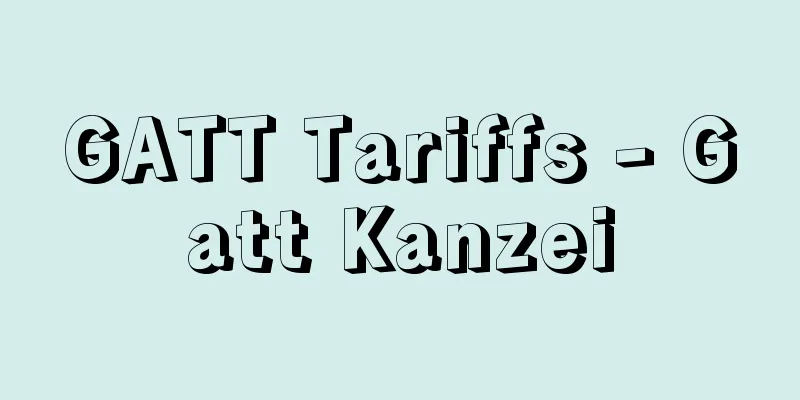Story - Tale

〘Noun〙① (━suru) To talk about various topics. To converse. To talk about all sorts of things. Also, the story. ※Shoki (720), First Year of the Emperor Kōgyoku, April (Iwasaki Honin) "Parents converse with each other . "② (━suru) In particular, when a man and a woman talk to each other. A euphemism for a man and a woman making a vow. ※Utsubo (c. 970-999), Toshikage "If only people could tell us stories in person."③ (━suru) When a young child speaks broken or incomprehensible words. ※Makura (end of the 10th century) 140 "Moreover, the very young child told stories, and he spoke in a vain manner."④ (━suru) To talk about a particular matter from beginning to end. Also, the story. It can especially refer to oral tradition and the telling of such traditions. ※Man'yoshu (late 8th century) 7.1287 "Even if no one meets me in the green Yosami plain, I will tell the story of Omi Prefecture, where the stones run . " ※Katsuyamaki - 15th year of Eisho (1518) "It is so mysterious that I have written it down and left it for the sake of a story." ⑤ One of the Japanese literary forms. A literary work in prose that is based on the author's observations or imagination and describes people and events in the form of a story. In a narrow sense, it refers to the fictional stories and song stories of the Heian period, and includes imitations of these stories from the Kamakura and Nanboku-cho periods. In a broad sense, it also refers to historical stories, tales, and war stories. Fictitious stories are divided into legendary stories and realistic stories. Storytelling stories. ※Kanchiin Hon Sanbo-e (984) Vol. 1 "It is also called a story, and it is a thing that carries out a woman's heart." ⑥ In Joruri and Kabuki, the main character reminisces about past events, memories, and feelings. Also, the direction of the story. Famous examples include "The Tale of Sanemori " and the Tale of Kumagai in " Ichinotani Futabagunki ." ⑦ In the Edo period, a person who stood at the gates of houses and recited tales of ancient battles to beg for money and gifts. [Essays, Morisada Manko (1837-53)] ⑧ In modern literature, this word refers to a story with a consistent plot, as opposed to a novel. It is also often added to the title of a work, meaning something that describes something. [Essay history] The verb "monogataru" was first seen in the Middle Ages, so it is thought to have been created by adding "mono" to the noun form of "kataru," which was established in the Nara period, rather than as a noun form of "monogataru." It became common in the Heian period.Monogatari (story)Mono-gatara-u -gatarafu [story]Source: The Selected Edition of the Japanese Language Dictionary About the Selected Edition of the Japanese Language Dictionary Information |
〘名〙① (━する) 種々の話題について話すこと。語り合うこと。四方山(よもやま)の話をすること。また、その話。※書紀(720)皇極元年四月(岩崎本訓)「親ら対ひて語話(モノカタリ)す」② (━する) 特に男女が相かたらうこと。男女が契りをかわしたことを婉曲にいう。※宇津保(970‐999頃)俊蔭「もし人もちかく御ものがたりやし給し」③ (━する) 幼児が片言やわけのわからないことを言うこと。※枕(10C終)一四〇「また、いとちひさきちごの、ものがたりし、たがへなどいふわざしたる」④ (━する) 特定の事柄について、その一部始終を話すこと。また、その話。特に口承的な伝承、また、それを語ることをいうことがある。※万葉(8C後)七・一二八七「青みづら依網(よさみ)の原に人も逢はぬかも石走る淡海県の物語(ものがたり)せむ」※勝山記‐永正一五年(1518)「余り不思議さに書付て物語の為に置レ申候」⑤ 日本の文学形態の一つ。作者の見聞または想像をもととし、人物・事件について人に語る形で叙述した散文の文学作品。狭義には平安時代の作り物語・歌物語をいい、鎌倉・南北朝時代のその模倣作品を含める。広義には歴史物語、説話物語、軍記物語などもいう。作り物語は、伝奇物語、写実物語などに分ける。ものがたりぶみ。※観智院本三宝絵(984)上「又物語と云て女の御心をやる物也」⑥ 浄瑠璃・歌舞伎で、時代物の主役が、過去の事件、思い出、心境の述懐などを物語る部分。また、その演出。「実盛(さねもり)物語」や、「一谷嫩軍記(いちのたにふたばぐんき)」の熊谷の物語などが名高い。⑦ 江戸時代、家々の門に立ち古戦物語などの素読をして金品を乞うた者。〔随筆・守貞漫稿(1837‐53)〕⑧ 近代文学で、ノベル(小説)に対し、一貫した筋を持つストーリーという概念にあてた語。また、…について述べたもの、の意で、題名に添えられることが多い。[語誌]動詞の「ものがたる」が見られるのは中世以降だから、「ものがたる」の名詞形というよりは、奈良時代に成立していた「かたる」の名詞形「かたり」に「もの」を付けて、ある種の「語り」を区別するために成立した語と考えられる。多く見られるのは平安時代になってからである。
もの‐がた・る【物語】もの‐がたら・う ‥がたらふ【物語】出典 精選版 日本国語大辞典精選版 日本国語大辞典について 情報 |
<<: Storytelling Monk - Storytelling
>>: Head of the household - Head of the household
Recommend
Dark Painting - Kurai-e
A short story by Noma Hiroshi. It was first publi...
Unexplained death - Henshi
In forensic medicine, a body that is found under a...
Kalikata - Kalikata
…J. Charnock of the British East India Company fi...
Burial at sea
A method of disposing of a corpse. The body is su...
Putun (English spelling)
… Until their downfall in 1524 by the Spanish arm...
Anfissa - Anfissa
…It was also a major player in the Second and Thi...
Sulfur monochloride
… [Disulfur dichloride] Chemical formula: S 2 Cl ...
Helicon Home Colony
…He soon became acquainted with socialists and be...
Musée d'Orsay (English)
...In addition to the existing collection, the Lo...
Ryuganpo
A fishing port at the mouth of the Yalu River in t...
Yemen
◎Official name: Republic of Yemen al-Jumhuriya al-...
Voznesenskii, Andrei Andreevich
Born: May 12, 1933, Moscow, Soviet Union [Died] Ju...
Oichi no Kata - Oichi no Kata
1547-1583 A woman from the Sengoku to Oda-Toyotom...
Trade theory - International trade theory
Trade theory is a branch of international economic...
Hardy amaryllis (English spelling) hardyamaryllis
...The Japanese species is sometimes called L. tr...








![Kawaminami [town] - Kawaminami](/upload/images/67cb46f0ae7a8.webp)
